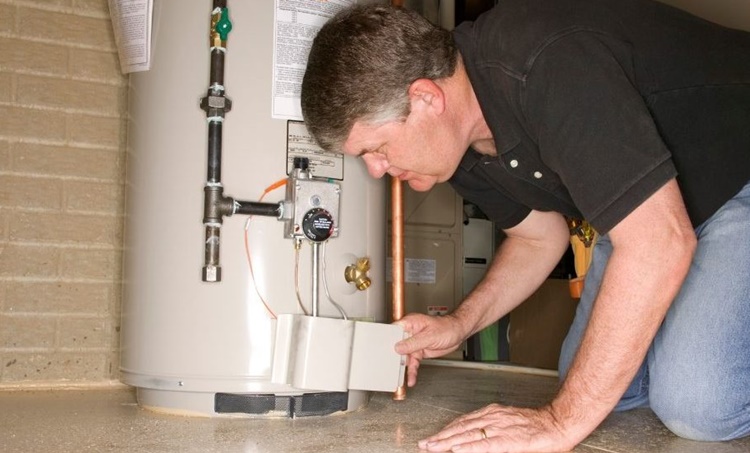The article which follows about How to Maintain a Hot Water Heater in a Few Simple Steps is absolutely fascinating. Have a go and draw your own personal findings.

Hot water is crucial for everyday comfort, whether it's for a revitalizing shower or washing meals. To guarantee your hot water system runs successfully and lasts longer, routine maintenance is crucial. This article offers sensible tips and understandings on just how to preserve your home's warm water system to avoid interruptions and pricey repair work.
Intro
Keeping your home's hot water system could seem difficult, yet with a few easy actions, you can guarantee it operates efficiently for several years to come. This guide covers whatever from recognizing your hot water system to DIY maintenance pointers and understanding when to call in specialist help.
Value of Keeping Your Warm Water System
Regular maintenance not only prolongs the life-span of your warm water system but also ensures it operates effectively. Disregarding upkeep can lead to lowered performance, greater power costs, and even premature failure of the system.
Signs Your Hot Water System Requirements Maintenance
Understanding when your hot water system needs interest can stop significant problems. Watch out for indications such as irregular water temperature, odd noises from the heating unit, or rustic water.
Flushing the Water Heater
Flushing your water heater removes debris accumulation, enhancing efficiency and prolonging its life.
Monitoring and Replacing Anode Rods
Anode poles avoid rust inside the storage tank. Checking and replacing them when worn out is essential.
Complex Issues Requiring Specialist Aid
Instances include major leaks, electric issues, or if your water heater is regularly underperforming.
Routine Specialist Upkeep Perks
Expert maintenance can consist of complete assessments, tune-ups, and making sure compliance with safety criteria.
Checking and Changing Temperature Level Setups
Changing the temperature setups makes sure optimal efficiency and security.
DIY Tips for Upkeep
You can carry out several upkeep tasks yourself to maintain your hot water system in leading condition.
Looking for Leaks
Routinely evaluate pipelines and connections for leakages, as these can lead to water damages and higher costs.
Comprehending Your Warm Water System
Prior to diving into upkeep jobs, it's practical to understand the standard components of your warm water system. Usually, this includes the water heater itself, pipelines, anode rods, and temperature level controls.
Regular Monthly Upkeep Tasks
Regular regular monthly checks can assist capture minor concerns before they rise.
Testing Stress Relief Valves
Checking the stress relief valve guarantees it functions properly and protects against extreme stress buildup.
Protecting Pipelines
Insulating hot water pipelines reduces warm loss and can conserve energy.
When to Call an Expert
While do it yourself maintenance is useful, some concerns require expert expertise.
Final thought
Normal maintenance of your home's warm water system is important for performance, durability, and price financial savings. By adhering to these ideas and understanding when to seek expert aid, you can ensure a trustworthy supply of warm water without unexpected disruptions.
How to Maintain an Instant Hot Water Heater
Before tinkering with your hot water heater, make sure that it’s not powered on. You also have to turn off the main circuit breaker and shut off the main gas line to prevent accidents. Also turn off the water valves connected to your unit to prevent water from flowing into and out of the appliance. 2. When you’re done, you have to detach the purge valves’ caps. These look like the letter “T†and are situated on either side of the water valves. Doing so will release any pressure that has accumulated inside the valves while at the same time avoid hot water from shooting out and burning your skin. 3. When the purge valves’ caps are removed, you have to connect your hosing lines to the valves. Your unit should have come with three hoses but if it didn’t, you can purchase these things from any hardware or home repair shops. You can also get them from retail stores that sell water heating systems. Read the user’s manual and follow it to complete this task properly. When the hosing lines are connected, open the purge port’s valves. 4. You should never use harsh chemical cleaners or solutions when cleaning your unit. Make use of white vinegar instead. It should be undiluted and you’ll probably use about 2 gallons. 5. Now flush your water heater. This task should probably take about 40 minutes. We can’t give you specific directions for this because the procedure is carried out depending on the type, model and brand of your heater. With that being said, refer to the user’s manual. 6. When you’re done draining the unit, you have to turn off the purge port valves again. Remove the hosing lines that you earlier installed on each of the water valves. Put the valve caps (purge port) back in their respective places and be very careful so as not to damage the rubber discs that are found inside these caps. 7. Now that everything’s back in place, check your user’s manual again to find out how to reactivate your water heating system. 8. Once it is working, turn one of your hot water faucets on just to let air pass through the heater’s water supply pipes. Leave the tap on until water flows smoothly out of it. https://www.orrplumbing.com/blog/2014/september/how-to-maintain-an-instant-hot-water-heater/
:max_bytes(150000):strip_icc()/tankless-hot-water-system-in-the-basement-of-a-green-technology-home-529577258-77afda16fd494c6899a78000888c3204.jpg)
As an avid reader on Tips For Maintaining Your Hot Water Heater, I thought sharing that excerpt was beneficial. Kindly take a moment to share this write-up if you appreciated it. We love your readership.
Schedule An Appointment